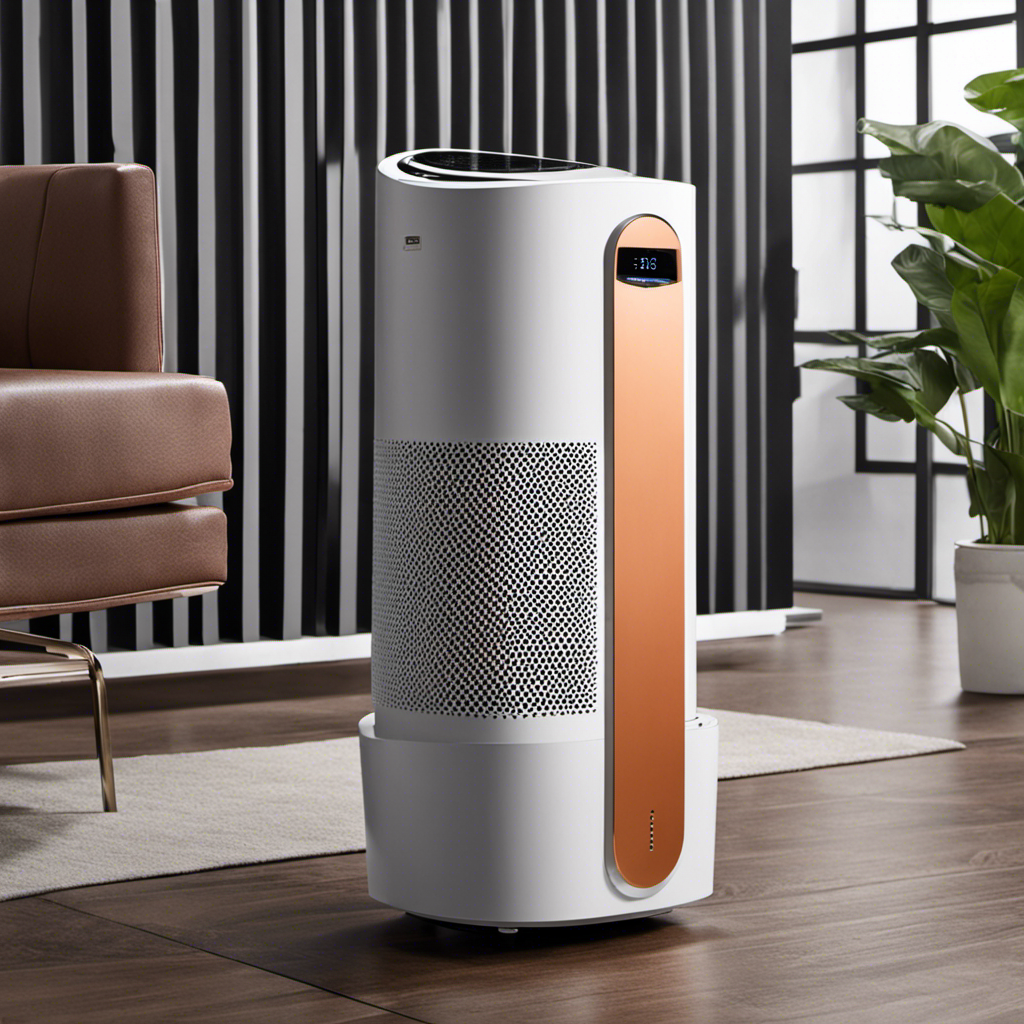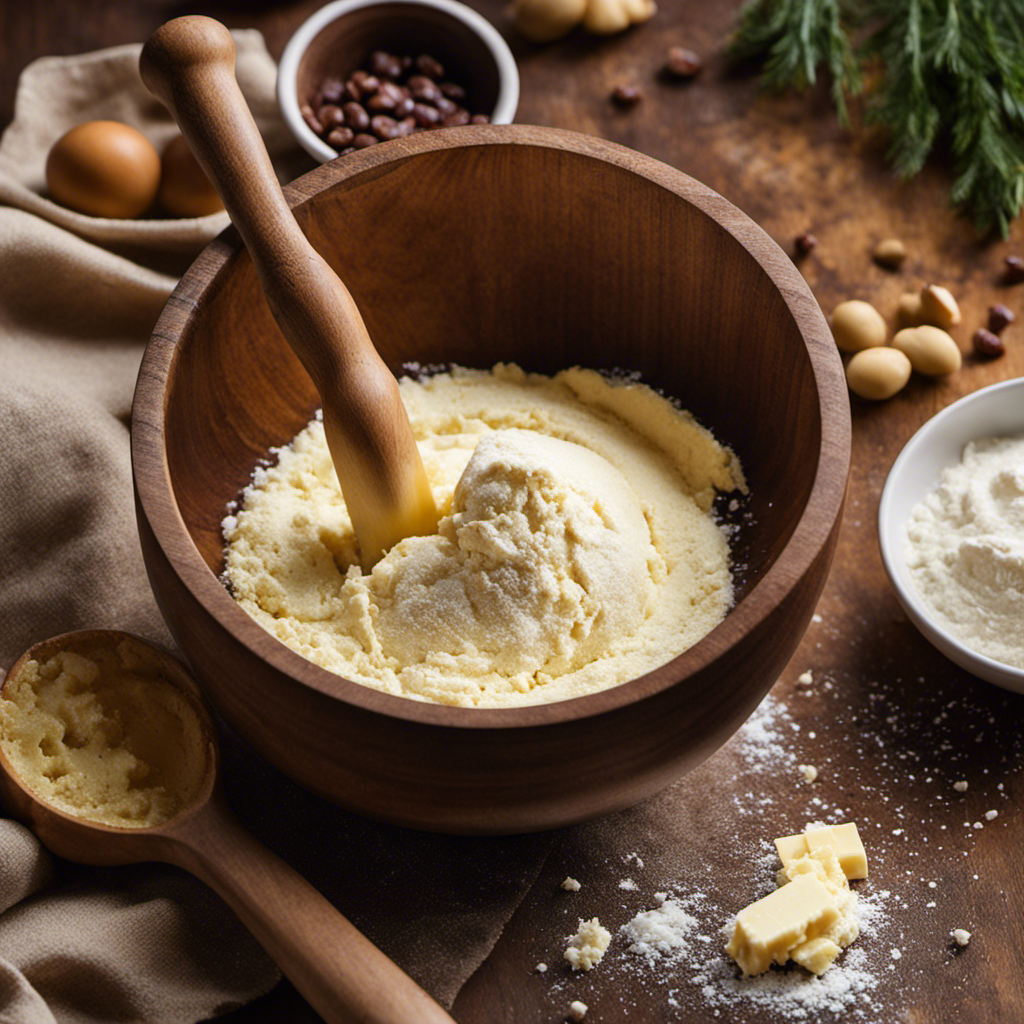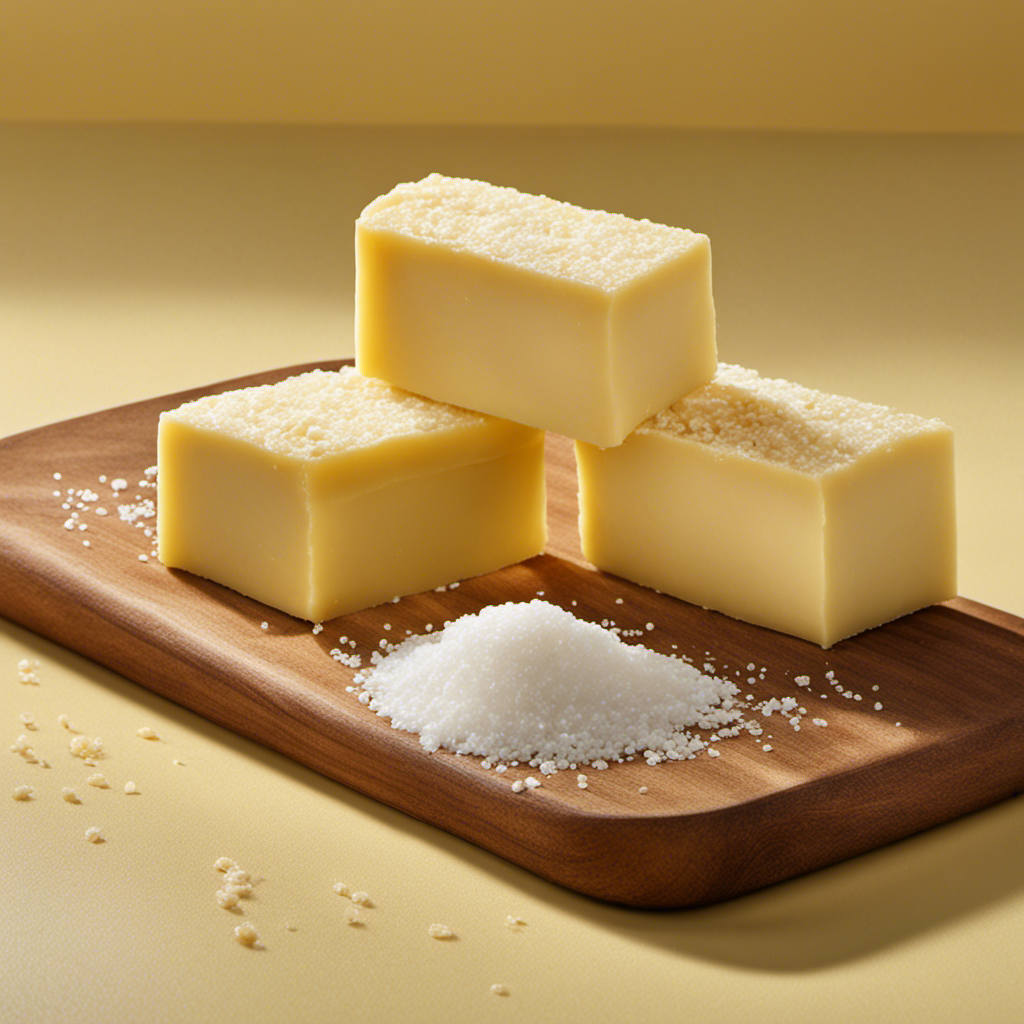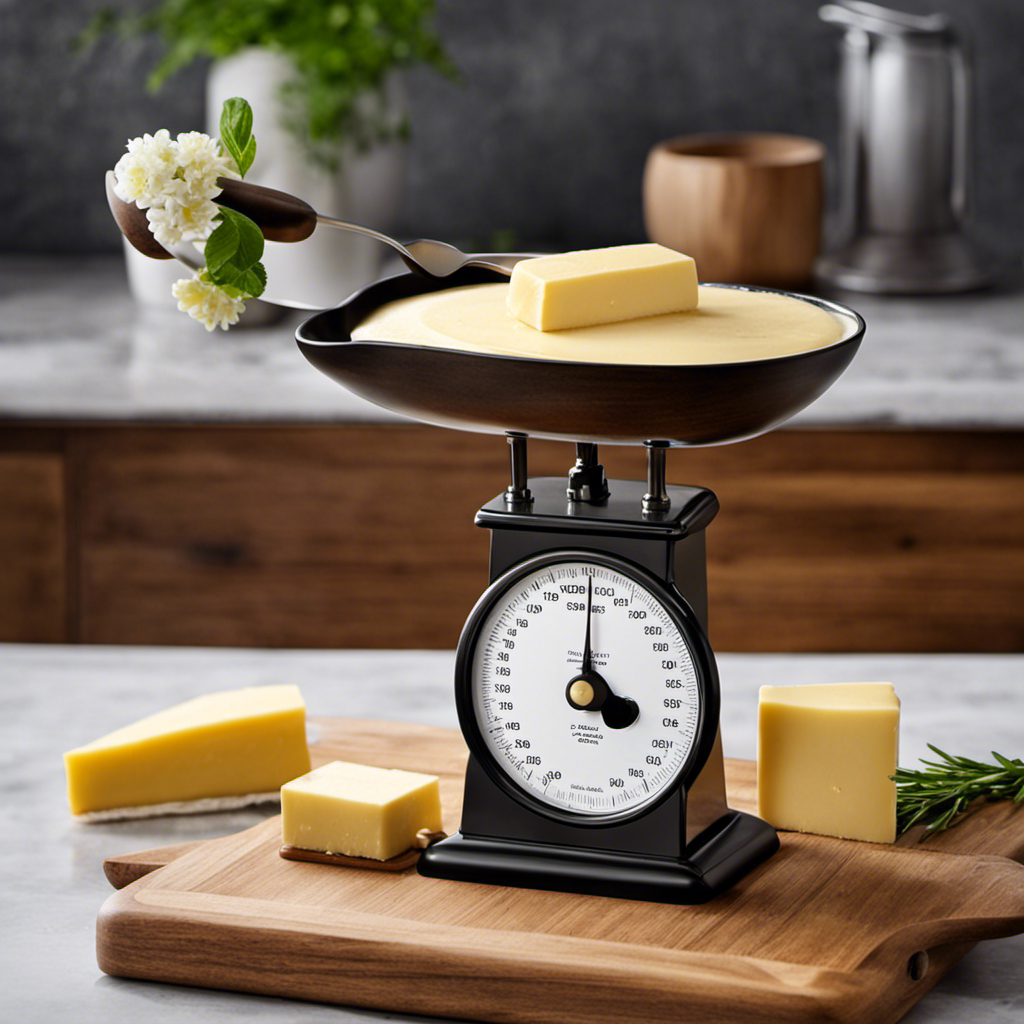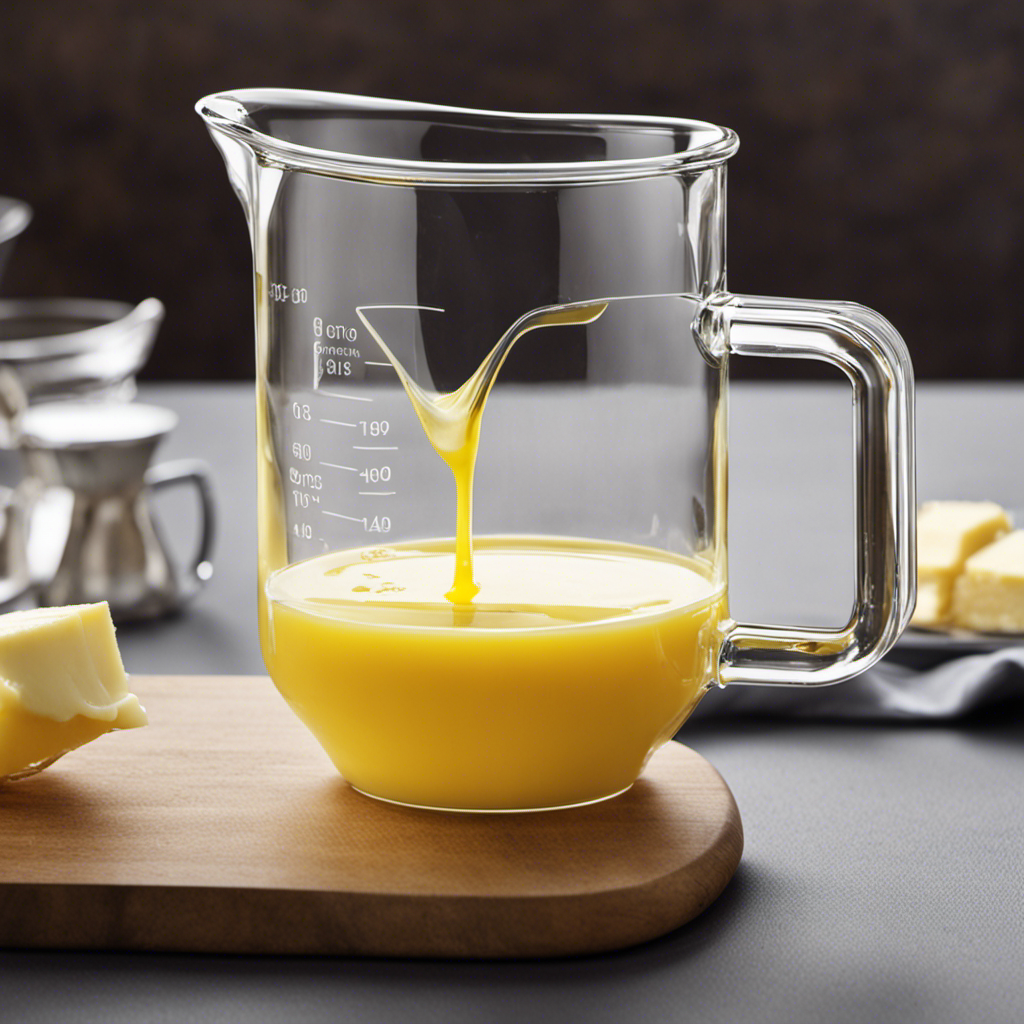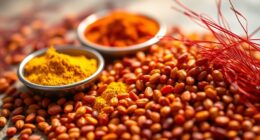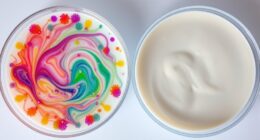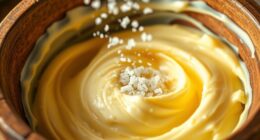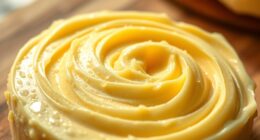I have some excellent advice for you on the best ways to clean your New Age Living Air Purifier.
Keeping your air purifier clean is essential for maintaining its optimal performance and ensuring that it continues to provide you with fresh, clean air.
In this article, I’ll walk you through the step-by-step process of cleaning each component of your air purifier, from the pre-filter to the UV-C lamp.
With these detailed instructions, you’ll be able to easily maintain your air purifier and enjoy the benefits of pure, healthy air in your home.
Key Takeaways
- Cleaning the filters regularly improves air quality and increases the efficiency of the air purifier.
- Regular cleaning extends the lifespan of the air purifier and enhances its performance.
- Determining the cleaning frequency depends on usage, air quality, dirt buildup, and following manufacturer’s recommendations.
- Cleaning various components such as ionizer plates, exterior, air intake vents, control panel, UV-C lamp (if applicable), and fan blades is necessary for optimal performance.
Cleaning the Pre-Filter
To clean the pre-filter, you’ll need to remove it from the air purifier. The pre-filter is an important component of the air purifier as it traps larger particles like dust, pet hair, and lint.
Regular cleaning of the pre-filter ensures optimal performance of your air purifier. Start by turning off the air purifier and unplugging it from the power source. Locate the pre-filter compartment, which is usually at the front or back of the unit.
Gently remove the pre-filter and shake off any loose debris. Use a vacuum cleaner or a soft brush to remove any stubborn dirt or dust. If the pre-filter is washable, rinse it under running water and allow it to air dry completely before reinstalling.
Cleaning the pre-filter every 2-3 months is recommended for proper maintenance of your air purifier.
Removing and Cleaning the HEPA Filter
Removing and cleaning the HEPA filter is essential for maintaining the effectiveness of your air purifier. As an expert in air purifiers, I can assure you that regular maintenance of the HEPA filter is crucial for optimal performance. Here are some key steps to follow when cleaning your HEPA filter:
- Turn off and unplug the air purifier to ensure safety.
- Locate the HEPA filter compartment and carefully remove the filter.
- Use a soft brush or vacuum attachment to gently remove dust particles from the filter.
- If the filter is washable, rinse it with water and let it air dry completely before reinstalling.
- If the filter is not washable, replace it with a new one according to the manufacturer’s instructions.
Cleaning the Activated Carbon Filter
When it comes to cleaning the activated carbon filter, there are a few key points to keep in mind.
Firstly, the cleaning frequency will depend on the usage and the level of air pollution in your environment.
Secondly, it’s important to follow proper cleaning techniques to ensure the filter is effectively cleaned without causing any damage.
Lastly, regular cleaning of the activated carbon filter offers several benefits. It helps maintain its efficiency in trapping odors and chemicals, prolongs its lifespan, and ensures optimal performance of your air purifier.
Cleaning Frequency for Carbon Filter
Make sure you regularly check and replace the carbon filter in your new age living air purifier to maintain its effectiveness. The carbon filter plays a crucial role in capturing and eliminating odors, chemicals, and volatile organic compounds from the air.
To ensure optimal performance, follow these cleaning schedule and maintenance tips:
- Check the carbon filter every month and replace it as needed.
- Vacuum the outer surface of the filter gently to remove dust and debris.
- Rinse the filter with lukewarm water to remove trapped particles.
- Allow the filter to air dry completely before reinstalling it.
- Keep a record of the filter replacement dates to ensure timely replacements.
By following these simple steps, you can ensure that your air purifier continues to provide clean and fresh air for you and your family.
Regular maintenance is key to maximizing the lifespan and efficiency of your carbon filter.
Proper Cleaning Techniques
To ensure the longevity of your carbon filter, it’s important to familiarize yourself with the proper cleaning techniques. Cleaning your carbon filter regularly not only helps maintain its efficiency but also extends its lifespan.
The first step in cleaning your carbon filter is to remove it from the air purifier. Gently tap the filter to remove any loose dust or debris. Next, rinse the filter under warm water to remove any remaining particles. Avoid using harsh chemicals or detergents as they can damage the filter. Once rinsed, allow the filter to air dry completely before reinstalling it in the air purifier.
Following these cleaning techniques will ensure that your carbon filter continues to effectively remove pollutants from the air.
Now, let’s explore the benefits of regular cleaning.
Benefits of Regular Cleaning
Regularly cleaning your carbon filter not only improves its efficiency but also helps extend its lifespan. Cleaning maintenance is vital for the proper functioning of an air purifier and ensuring it continues to provide clean and fresh air.
Here are some important tips for extending the lifespan of your air purifier:
- Regularly clean the pre-filter to remove larger particles and debris.
- Vacuum the exterior of the air purifier to remove dust and dirt buildup.
- Clean the HEPA filter according to the manufacturer’s instructions to maintain its effectiveness.
- Use a damp cloth to wipe down the exterior of the air purifier to remove fingerprints and smudges.
- Consider using an air purifier cover to protect it from dust and other contaminants.
By following these maintenance tips, you can ensure that your air purifier remains in excellent condition and continues to provide you with clean air.
Now let’s move on to the next section about cleaning the ionizer plates.
Cleaning the Ionizer Plates
You should first unplug the air purifier before cleaning the ionizer plates. Cleaning the ionizer plates is an important step in maintaining your New Age Living air purifier.
To clean the ionizer plates, you will need a soft cloth or sponge, warm soapy water, and a clean, dry cloth. Gently remove the ionizer plates from the air purifier, taking care not to damage them.
Dip the cloth or sponge in the warm soapy water and wipe down the plates, removing any dirt or debris. Rinse the plates with clean water and dry them thoroughly with the clean, dry cloth.
Once the plates are clean, carefully reinsert them back into the air purifier. Remember to also clean the fan blades and power cord regularly to ensure optimal performance of your air purifier.
Cleaning the Exterior of the Air Purifier
When it comes to cleaning the exterior of your air purifier, there are a few key points to keep in mind.
First, gather the necessary cleaning materials, such as a microfiber cloth, mild detergent, and water.
Next, use proper cleaning techniques, such as gently wiping the surface of the air purifier with the damp cloth and avoiding harsh chemicals that could damage the unit.
Cleaning Materials Needed
To clean the new age living air purifier, you’ll need a microfiber cloth, mild soap, and warm water. Here are the step-by-step instructions on how to properly clean your air purifier:
- Gently remove the front cover of the air purifier.
- Dampen the microfiber cloth with warm water.
- Add a small amount of mild soap to the cloth and gently wipe the front cover to remove any dirt or dust.
- Rinse the cloth with clean water and wring out any excess moisture.
- Use the damp cloth to wipe the rest of the air purifier, including the sides and back.
Cleaning your air purifier regularly will ensure that it continues to function effectively and provide you with clean and fresh air.
Now that you have the necessary cleaning supplies, let’s move on to the proper cleaning techniques.
Proper Cleaning Techniques
Using a microfiber cloth and mild soap, gently wipe the front cover of your air purifier to remove any dirt or dust. Proper cleaning techniques are essential to maintain the efficiency and longevity of your air purifier. Regular cleaning not only ensures that the device functions optimally but also improves the air quality in your space. Here are some benefits of regular cleaning:
| Benefits of Proper Cleaning Techniques | |
|---|---|
| 1. Improved Air Quality | Regularly cleaning your air purifier removes dust, allergens, and pollutants, resulting in cleaner air for you to breathe. |
| 2. Increased Efficiency | Removing dirt and dust buildup from the front cover and filters allows the air purifier to circulate air more effectively, maximizing its performance. |
| 3. Prolonged Lifespan | Regular maintenance and cleaning of your air purifier help prevent damage and extend its lifespan, saving you money in the long run. |
Frequency of Cleaning
Regularly cleaning your air purifier can significantly improve its performance and lifespan. Maintaining a clean air purifier is essential to ensure that it operates efficiently and effectively. Here are some maintenance tips to help you determine the cleaning frequency for your air purifier:
-
Consider the usage: If you use your air purifier on a daily basis, it’s recommended to clean it at least once every two weeks.
-
Check the air quality: If you live in a highly polluted area or have pets, you may need to clean your air purifier more frequently.
-
Look for signs of dirt buildup: If you notice dust or debris accumulating on the filters, it’s a good indicator that it’s time for a cleaning.
-
Follow the manufacturer’s recommendations: Each air purifier model may have specific cleaning instructions, so be sure to consult the manual.
-
Listen to your senses: If you detect any unusual smells or a decrease in airflow, it’s a sign that your air purifier needs cleaning.
Cleaning the air intake vents is an essential part of the maintenance process.
Cleaning the Air Intake Vents
Cleaning the air intake vents is essential for maintaining the efficiency of your new age living air purifier. Over time, dust, pet dander, and other airborne particles can accumulate on the vents, reducing the airflow and the purifier’s effectiveness. To clean the vents, follow these simple steps:
- Turn off and unplug the air purifier.
- Locate the air intake vents on your purifier.
- Use a soft brush or a vacuum cleaner with a brush attachment to gently remove the dust and debris from the vents.
- Wipe the vents with a damp cloth to remove any remaining dirt.
- Allow the vents to dry completely before plugging in and turning on the air purifier.
Regularly cleaning the air intake vents will ensure that your purifier functions optimally and continues to provide clean and fresh air in your living space.
It is also important to clean the air filter regularly to maintain the performance of your purifier. If you encounter any issues with your air purifier, such as strange noises or reduced airflow, refer to the troubleshooting guide provided by the manufacturer.
Cleaning the Control Panel
Before starting, make sure to turn off and unplug the air purifier to clean the control panel. Cleaning the control panel of your New Age Living air purifier is essential for its optimal performance. Here are some tips to help you through the process:
- Gently wipe the control panel with a soft, damp cloth to remove any dust or dirt.
- Use a mild detergent or cleaning solution to tackle stubborn stains or spills.
- Avoid using abrasive cleaners or harsh chemicals that may damage the control panel.
- Pay extra attention to the buttons and knobs, ensuring they are thoroughly cleaned and free from debris.
- If you encounter any issues with the control panel, such as unresponsiveness or erratic behavior, consult the user manual for troubleshooting steps.
With the control panel cleaned, let’s now move on to cleaning the UV-C lamp (if applicable) to maintain the overall efficiency of your air purifier.
Cleaning the UV-C Lamp (If Applicable
Once you’ve ensured the control panel is clean and free from debris, it’s time to take a look at the UV-C lamp (if applicable) and give it a thorough cleaning to maintain the efficiency of your air purifier.
The UV-C lamp is an important component of your air purifier as it helps to kill bacteria and viruses in the air. To clean the UV-C lamp, first, make sure the air purifier is turned off and unplugged. Gently remove the lamp from its housing and use a soft cloth or sponge to wipe away any dust or dirt. If there are stubborn stains, you can use a mild detergent diluted with water. Be sure to rinse the lamp thoroughly and let it dry completely before reinstalling it.
Cleaning the fan blades is also crucial for maintaining optimal performance. Using a soft brush or cloth, gently remove any dust or debris from the blades. This will prevent the build-up of pollutants and ensure that the air purifier can effectively circulate clean air.
Regularly disinfecting your air purifier is essential for keeping the air in your home clean and healthy.
Reassembling and Maintaining the Air Purifier
To keep your air purifier running smoothly, make sure to regularly check and replace the filters as needed. This is an essential part of maintaining the air purifier and ensuring its optimal performance.
Cleaning techniques can vary depending on the type of filter, but here are some general tips to help you keep your air purifier in top shape:
- Gently vacuum the surface of the pre-filter to remove larger particles and debris.
- Use a soft brush or cloth to clean the HEPA filter, being careful not to damage the delicate fibers.
- If your air purifier has a carbon filter, replace it according to the manufacturer’s instructions.
- Wipe down the exterior of the air purifier with a damp cloth to remove dust and dirt.
- Regularly check the air purifier’s fan and vents for any obstructions or buildup that may hinder airflow.
Frequently Asked Questions
How Often Should I Clean the Pre-Filter of My New Age Living Air Purifier?
I clean the pre-filter of my air purifier regularly to maintain its performance. It’s important to follow the manufacturer’s instructions on how to clean it properly and keep the air purifier functioning efficiently.
Can I Wash the HEPA Filter of My New Age Living Air Purifier?
Sure, you can wash the HEPA filter of your New Age Living Air Purifier. It’s important to follow proper cleaning methods and maintenance tips to ensure its effectiveness. Let me explain how.
How Frequently Should I Clean the Activated Carbon Filter?
To clean the fan of my New Age Living Air Purifier, simply remove the front panel and gently wipe the fan blades with a damp cloth. For the control panel, use a soft, dry cloth to remove any dust or debris.
Do I Need to Clean the Ionizer Plates of My Air Purifier Regularly?
Do I need to clean the ionizer plates regularly? Cleaning tips and maintenance guide include regular cleaning of ionizer plates to ensure optimal performance and efficiency of the air purifier.
Is It Necessary to Clean the UV-C Lamp of My New Age Living Air Purifier?
Yes, it is necessary to clean the UV-C lamp of my New Age Living air purifier regularly. Using an air purifier with a dirty UV-C lamp is not safe. Proper maintenance includes following the manufacturer’s instructions for cleaning and replacing the lamp.
Conclusion
In conclusion, keeping your new age living air purifier clean is absolutely crucial for a healthy and purified living space.
By following these thorough cleaning steps, you can ensure that your air purifier is functioning at its optimum level, providing you with the cleanest air possible.
Don’t underestimate the power of a clean air purifier – it’s like having a superhero protecting your respiratory system from harmful pollutants.
So, take the time to regularly clean and maintain your air purifier, and breathe in the fresh, purified air you deserve.
